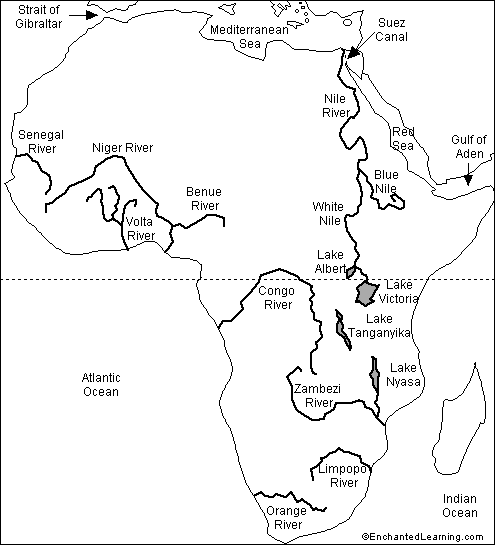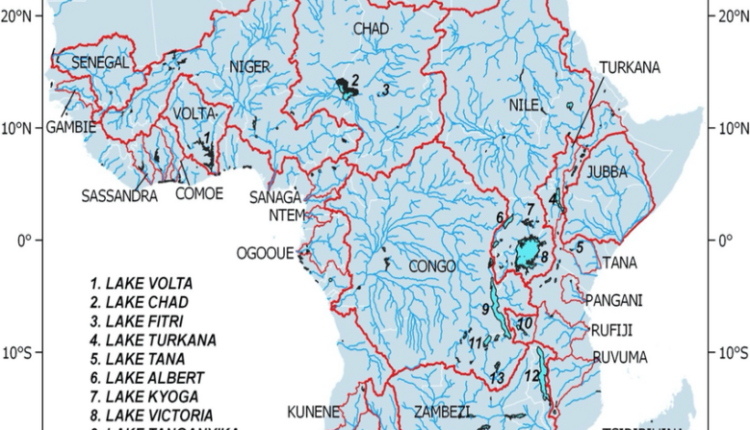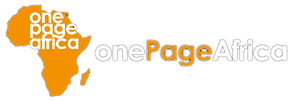By Lanre Badmus
Presented at the 35th PIANC World Congress – 29th April to 3rd May 2024, Cape Town, South Africa
ABSTRACT
This presentation discusses the transformative influence of inland navigation on urbanization and industrialization in Africa, a continent blessed with vast and well-connected water bodies. Africa is surrounded by water and although many urban settlements on the continent are situated near or along water bodies, city planners focus less on the waterways but allocate huge resources to building land based transport infrastructure and the damage is now today’s reality.
The experiences of countries in Europe, Asia and North America suggest that inland navigation is a safe, efficient and environmentally friendly form of transport that lowers transport costs, promotes trade and social cohesion, all of which are key requirements for flourishing urban settlements. However in Africa, the rivers and lakes are regarded as routes for the rural and unsophisticated, they have never enjoyed the kind of investments to play a complimentary role in rural-urban logistics or support significant intra-African trade.
The paper examines the nature of inland water transportation in Africa; it analyzes existing cooperative agreements on inland navigation in Africa, identify factors impacting on the development of water transportation and ways it can influence sustainable urbanization and industrialization in Africa.
With the establishment of a continental free trade area to boost intra-African trade, this paper calls for the immediate operationalization of extant cooperative agreements on inland and coastal shipping in Africa, the adoption of integrated urban water management concept that would ensure the river systems in Africa are connected, safe for all year navigation, environmentally friendly, support economic development and make urban settlements to flourish.
Keywords: inland navigation, water transportation, trans-boundary river agreements, sustainable urbanization, integrated urban water management
BACKGROUND
Whilst Africa is blessed with long and expansive waterways, settlements across the continent continue to battle with chronic mobility and developmental issues. There are 38 coastal countries in Africa with over 60 trans-boundary river basins covering 64% of the continent’s thirty million km2 land area [13]. The three prominent river systems cumulatively connects a third of the continent’s land area: namely the River Nile that covers almost 10% of the continent, the Congo River about 13%, and River Niger covers 7.5% [4].
Africa has the lowest per capita water transport infrastructure stock of any region of the world. 70% of major cities and national capitals on the continent are located along or by a waterfront; however they are majorly urban slums unlike in Asia and Europe where majority of the coastal settlements enjoy easy access to both domestic and foreign markets [1].
The under-performance of Africa’s inland waterways has been linked to historical and institutional neglect. Under a colonized Africa, the European rulers focus was on exploiting the continent’s resources, thus they invested entirely on rail infrastructure, which provided the best returns on investments. The National Governments that took over the reins after independence did very little to improve on what was inherited.
The institutions created were poorly funded; those responsible seem to regard water transport as old fashion. Efforts by state institutions to develop the waterways were very limited in strong contrast to the attention and financial allocations made to the building of infrastructure on land [9]. City planners turn their backs on the waterways and try to redesign the settlements to conform to the geometry and demands of the road network [8]. Today, roads are the dominant transport mode in Africa with low reliability and congestion issues, despite the transformative potential of Inland Water Transport.
Africa is urbanizing rapidly, however the emerging new cities often lack basic social amenities, residents are faced with limited economic opportunities and serious environmental pressures. With her huge water resources, Africa should begin to take concrete steps to harness her rivers and waterways to transform her urban slums into livable modern cities.
NATURE OF INLAND NAVIGATION IN AFRICA
Across the continent, the river system is populated by wooden boats powered by motor engines usually over-tasked with passengers and goods. The business receives little investment and attention from the authorities, the wooden boats operates from facilities deemed unsafe and inefficient, they are manned by non-certified personnel and unregulated. Many littoral communities are very difficult to reach for the supply of food, fuel and other essential goods.

Source: EnchantedLearningSearch.com

Figure 2- Africa’s River Basins and Lakes Source: Research Gate –Surveys in Geophysics (2023)
Residents rely on dugout canoes to transport their wares; these local boats are not integrated into the dominant land centered transport network. In the Niger Delta region, the largest oil and gas producing basin in Africa, crisscrossed by network of rivers and lakes, almost half of the residents live in remote, isolated and inaccessible communities with no motorable roads. For people in the region, the waterway is absolutely imperative for survival and for accessing social services-education and health services [7]. The neglect of these river communities, ravaged by poverty and insecurity, have seen them become hotbeds of transnational crimes – armed robbery, piracy, drug smuggling, illegal, unreported and unregulated (IUU) fishing etc.
The Congo River boasts of the continent’s largest network of navigable waterways, about 14,000km; however of this total, just about 1,000km are accessible all year, depending on the height of the water [3].The amount of goods transported on the Congo River – consisting mainly of agricultural produce, wood, minerals, and fuel – is very modest (less than 5%) in comparison with the situation in Europe.
Table 1: Drivers and Constraints of Inland Navigation
| Factor | Driver | Constraint |
| Social | Urbanization/population growth | Safety/cultural apathy |
| Infrastructure | Land use/physical facilities | Huge capital investments |
| Economic | High charges/traffic congestion | Inadequate transshipment facilities |
| Environment | Emissions/climate change | Pollution/hydrological conditions |
| Technology | Autonomous/digital devices | Policy/political decision making |
Table 2: Impact of River Systems
| Freight and passenger movement | less waiting times, fuel savings, reduction in cost (use of large capacity vessels) |
| Hydroelectric power
|
homes, agro-processing, industries |
| Water management | flood protection and control, agricultural irrigation, water supply for industries and water consumption |
| Leisure and water sports
|
revelling, aqua-tourism, fishing |
| Land and urban development | landscape, nature conservation, real estate, wildlife habitats |
Cooperative Agreements
African countries have over the years promoted a number of legal instruments on maritime transport, trade and trans-boundary rivers for the economic development of the continent.
Many of the rivers and lakes in Africa transverse two or more countries, agreements were signed on the cooperative use of these large water bodies. For the Nile basin, about 15 agreements exist between 1925 and 2003, 6 for the Senegal River basin between 1963 and 1968, 10 for the Niger River basin and 3 for the Volta River basin over the last several decades [11]. These agreements on cooperative use of water focused on basin development activities, mainly dam building for hydropower and irrigation.
The African Maritime Transport Charter, first adopted June 1994 in Tunis and later revised, is the main continental cooperative agreement that deals particularly on maritime transport in the promotion of trade and industrialization in Africa. The treaty sought to strengthen cooperation among African countries in inland and ocean transport. Due to insufficient response by Member States, the Tunis document was jettisoned. The revised Charter, adopted July 2010 in Kampala (Uganda), is to enter into force thirty (30) days after the deposit of the instrument of ratification by fifteen (15) of the Member States with the Chairperson of the Commission. Data on the AU Secretariat website indicate that, as at 25th March 2022, twenty-five (25) Member States have signed, but just twelve (12) Member States have ratified and deposited the revised charter instrument.
The Charter recognized the role of maritime transport in the facilitation of trade, generate employment, create wealth and connect communities, among other benefits. It seeks to foster the growth indigenous players in the ownership and operation of shipping related services, with a view to promoting intra-African trade and trade between Africa and other continents. The treaty emphasized the importance of cooperation and harmonization of maritime, port and inland waterways policies, regulations and procedures.
The revised charter provides that Member States:
- promote the establishment of national and regional shipping lines and provide them the assistance necessary for their success
- develop and promote mutual assistance and cooperation between States Parties in the area of maritime safety, security and protection of the marine environment
- promote the sharing of best practices among States Parties in the overall management and operation of Maritime Administrations and other maritime entities established in terms of this Charter
- promote the provision of maritime education and training at all levels including secondary schools
- promote the employment of seafarers, decent working conditions and training of seafarers
- promote development of multimodal transport and integration of all modes of Transport
The Charter urges State Parties to support the implementation of a “Trans-African Cabotage regime, it also provides for a “Continental Unit” or Secretariat to coordinate activities of regional cooperation in shipping, marine pollution and port operations. Another proviso in the revised charter is for the establishment at continental level, an Association of African Maritime Administrations (AAMA). This body was inaugurated October 2012 in South Africa; however it has been in the news more for the optics than substance.
The rising threats of piracy, hijacking of ships and other crimes such as illegal, unreported and unregulated (IUU) fishing, smuggling, drugs, human and small arms trafficking, led to calls for strong action to halt the pervasive insecurity within the African maritime domain. The African Charter on Maritime Security and Safety (Lome Charter) was adopted and signed by African Heads of State and Government in October 2016, to promote safety and sustainable development of continent’s blue/ocean economy while also dealing with challenges of insecurity, towards giving teeth to the AU’s 2050 Africa Integrated Maritime Strategy (AIMS 2050), that was adopted in January 2014. As at April 2022, thirty-five (35) Member States have signed the Lome Charter while only three (3) have ratified and deposited the charter instrument.
Another supportive agreement is the African Continental Free Trade Agreement, adopted March 2018 in Kigali (Rwanda) which entered into force on 30th May 2019. The AfCFTA seeks to create a single market for goods and services, thus increasing the demand for inland and maritime shipping services As at March 2023, fifty-four (54) Member States have signed the treaty while forty-seven (47) Member States have ratified and deposited the agreement instrument.
DISCUSSION
Transportation influences urban form and urbanization, it enables access to resources, goods and services. Efficient transportation systems make settlements (rural and urban) livable and sustainable. The development of waterborne infrastructure brings more benefits beyond transport – improvement of inland navigation helps to reduce flooding, provide reservoirs for electricity, facilitates all year farming, create employment, promote tourism, trade and industry, supports urban renewal, while reducing potential environmental damage associated with automobiles and fossil fuels.
Table 3: Inland Waterways and Urbanization
| Economy | Increase in agriculture income
Increase of commercial land value More land for urban or industrial projects |
| Industry | Lower operating and logistics costs
Lower energy costs Less traffic congestion |
| Urban planning
|
Dredged materials can be used to transform areas into urban settlements and industrial clusters
Alignment of old roads and railways, creation of new land infrastructure (roads, bridges, overpass etc.); Improvement of waste water sewerage networks |
| Quality of Life | Lower noise level
Lower accident rate Less environmental damage |
Africa has never lack good policies, the down-side has been the political will. For the continent to transit from a land of poverty to prosperity, the revised African Maritime Transport Charter must be made active as soon as possible. A supra-national body is required, dedicated to the rapid and sustainable development of Africa’s navigation infrastructure as well as her river systems. The AU Commission should take steps to constitute a body of experts that would commence the groundwork to fast track the implementation of the AMT charter prior to securing the requisite endorsements of her member States. The Commission should galvanize AU Heads of State and Government to invest the kind of energy that made it possible for AfCFTA to be adopted and come into force within a span of two years.
With the support of technology, water transport has grown to become the most economic and attractive means of transiting persons and freight, within and between communities. Investments in water resources help cities to grow sustainably and become attractive places to live. Cities benefits by putting water at the core of their urban planning, cities that have successfully integrated water resources (rivers, canals, lakes and harbours) in their urban planning tend to have a pull-effect on people. Homes with a glimpse of the sea or a piece of the riverside attract significantly higher market value [10].
In major cities in Europe, USA and Asia, river banks and waterfronts have become places where people gather to socialize. Motorways have been removed and turned into open, urban rivers with lots of recreational value for residents and tourists [12]. The African trans-boundary river basins covers 64% of the continent, higher than in the EU territory that is about 60% [5], however in the last two hundred years Europe has been able to integrate her river systems to facilitate rapid economic growth and develop several modern livable cities.
The situation in Africa is very different; many of urban settlements located either on a navigable river or at the mouth of a navigable river, lack basic services like electricity, water and sanitation – contributing to disease outbreaks, untreated waste and waste water. Poor planning has further exposed these settlements to flooding, coastal erosion and landslides. Yet these rivers are in geographical proximity, such that by constructing canals as links, they become marine highways, that supports the economy and urban development.
The challenge of chaotic urban planning and stunted industrialization that characterize settlements blessed with large water bodies in Africa can be addressed by adopting the integrated urban water management (IUWM) concept which links basin management of water in a town or city with its development plans to achieve sustainable economic, social, and environmental goals [6].
The IUMW approach ensures urban water usage (waterways, water supply, sanitation, storm water, waste water) are managed in a holistic and sustainable manner. It considers the intersection of the urban water cycle with other aspects of urban planning such as city infrastructure, mobility and land use. IUMW also ensures that all sources and uses of water are managed to satisfy the different demands of the city residents (domestic, agriculture, industry, recreation and the environment) for a sustainable urban economy.
Other value adding approaches include Working with Nature (WwN) concept promoted by the World Association for Waterborne Transport Infrastructure, formerly Permanent International Association of Navigation Congresses (PIANC) and Engineering With Nature® (EWN® – promoted by the US Army Corps of Engineers (UASCE), that promotes the use of nature-based solutions (NbS) that provides economic, environmental, and social benefits in the delivery of navigation infrastructure projects; the use of wetlands, ponds and streams to enhance climate adaptation/reduce negative impacts of climate change hazards.
CONCLUSION
Water transportation accelerates economic development, it allows businesses to lower production and delivery costs, influences land use pattern, supports urbanization and inflicts less damage on the environment compared with other transport modes. Africa’s inability to effectively harness her river systems and integrate into other modes (rail and road) is a probable factor why intra-African trade remains the lowest of any region of the world.
Every year, humongous amount of money are ploughed by African countries into highways construction and rehabilitation, however less than 10 percent of the amount invested per km of road is required by an inland waterway [2].
In the context of urban development, the waterways have been shown as a major contributor in the transformation of an urban slum into a livable city. The role of water in sustainable urbanism cannot be overstated – low cost transport of goods and people, healthy environment to live in, fosters social cohesion and stimulates sustainable development.
REFERENCES
[1] Agyei-Boakye P. Oforiwaa (2022), Here Is Why Africa’s Transport System is Underdeveloped, Transport Africa, April, 2022.
[2] Archives of Business Research (2017), Vol. 5, Issue 1, January 2017.
[3] Bonnerjee S., Anne, C., Harald K., David L., Jasna, M., Benjamin N., Gernot P., Ian W., (2009). Inland Waterborne Transport: Connecting Countries. International Navigation Association (PIANC), United Nations World Water Assessment Programme: Side Publications Series – UNESCO, ISBN 978 -92-3-104110-5
[4] Food and Agriculture Organization (1997), Irrigation Potential in Africa: A Basin Approach – FAO Land and Water Bulletin 4, ISBN 92-5-103966
[5] Gabor Baranyai (2019), Trans-boundary Water Governance in the European Union: the (unresolved) allocation question. Water Policy (2019) 21 (3); 496-513
[6] Global Water Partnership Policy Brief (2013) – Integrated Urban Water Management (IUWM): Toward Diversification and Sustainability
[7] Gray L. (2004) “An examination of the problems of water transportations in old Degama Province, Nigeria”. Journal of Waterways Africa, No. 33, pp. 20-26
[8] Hilling D., (1996),“Transport and Developing Countries – Published by Routledge, London
[9] Jansen E., G., Dolma A., Jerve A. M., and Rahman N (1985),The Country Boats of Bangladesh. Social and Economic Development and Decision Making in Inland Water Transport DERAP Publication No 185, Bergen, Norway
[10] Krishna Rao (2022), Integrated Urban Water Management, The Times of India, May 2022.
[11] Lautze J., Giordano M., and Borghese M., (2005), Driving forces behind African trans-boundary water: internal, external and implications, International Workshop on African Water Laws. Plural Legislative Frameworks for Rural Water Management in Africa, 26-28 January 2005, South Africa
[12] State of Green (2020), Water as a Key Element in Urban Transformation, Article Published 21 October 2020 (www.stateofgreen.com).
[13] UNEP (2010), Africa Water Atlas, Division of Early Warning and Assessment (DEWA), United Nations Environment Programme, Nairobi
